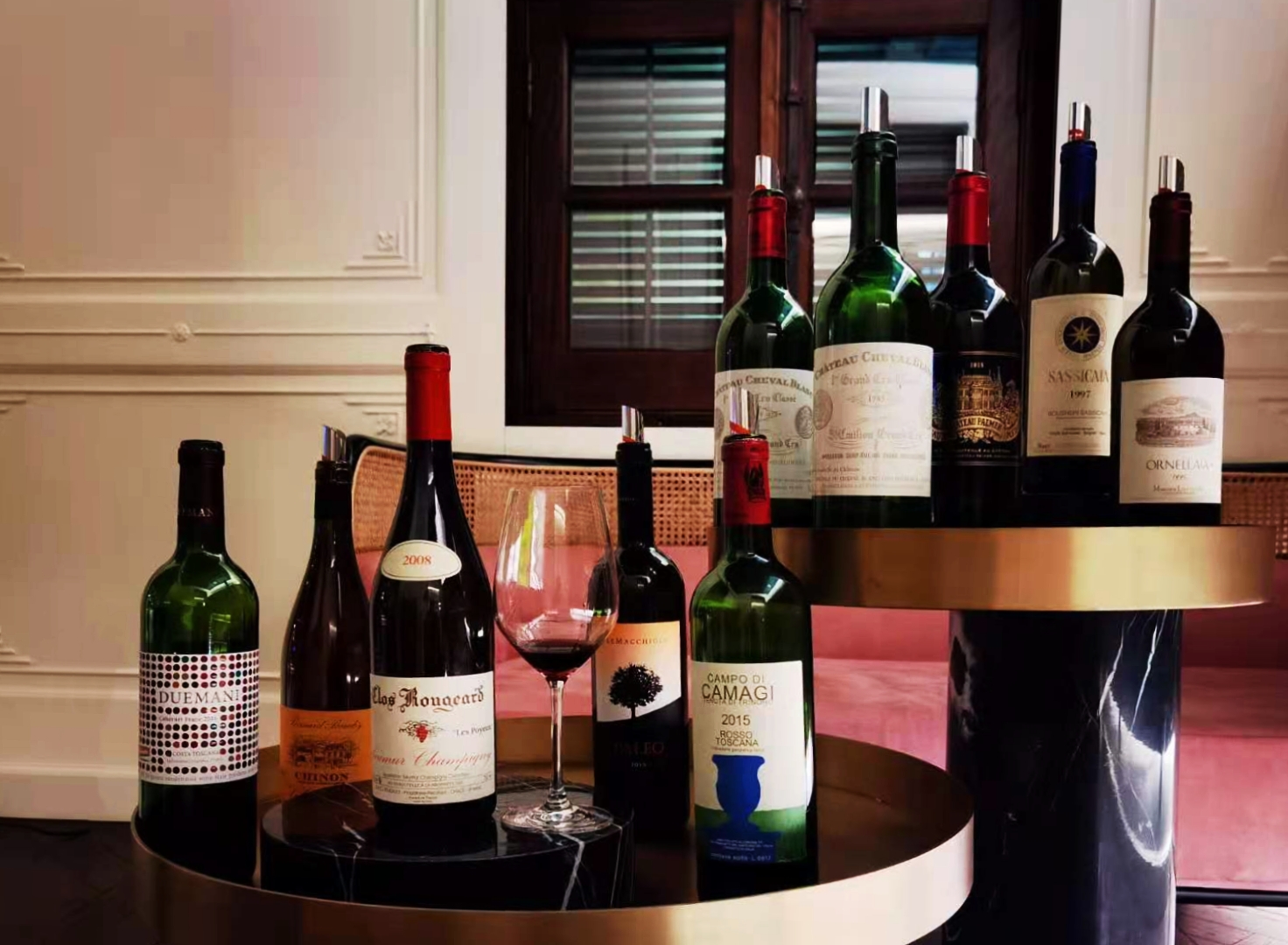
Without doubt, there is no other grape variety that has gained more standing in recent years than Cabernet Franc. Gone are the days when it was viewed as Cabernet Sauvignon’s little brother, mostly the result of weedy wines of dubious green streaks and little charm. But the so-so reputation the grape was saddled with was unfair, as it was in large part due to a case of mistaken identity. In fact, Cabernet Franc gives wines that, when full physiologic ripeness of the grapes is attained, are light on their feet, blessed with lively acidity, and have an amazingly perfumed, enticing lightly aromatic quality that is never found in wines made with either Cabernet Sauvignon or Merlot, its two most important relatives. And when the product of truly great terroirs (Saint-Emilion, Pomerol, Bolgheri and parts of the Tuscan Coast, parts of the Loire, and very few others around the world), then Cabernet Franc wines reach a specific strawberry-, violet- and mineral-infused creaminess that is absolutely enchanting, unforgettable and unique amongst the world’s great wines.
Cabernet Franc: grape variety
Cabernet Franc’s origin is Basque: it was born either in France’s Southwest (the French Pays Basque or French Basque country) or, more likely, in Spain’s País Vasco (Spanish Basque country) where it gave birth to the all-important Carmenet family lineage (careful: Carmenet, not Cabernet). Though it’s not entirely clear which grapes are it’s parents, scientific research studies have shown that Cabernet Franc has a parent-progenitor relationship with Hondarribi Beltza (interestingly, in Spain’s Txakoli area it’s often confused with Cabernet Franc) and Morenoa (grown almost exclusively in Spanish Basque country). In fact, Cabernet Franc (the oldest member of the Carmenet family) is itself one of the parents of many other ultra-famous wine grapes: most notably, both Merlot and Cabernet Sauvignon (for example, Cabernet Sauvignon is the result of Cabernet Franc and Sauvignon Blanc hitting it off, most likely somewhere in a Bordeaux vineyard).
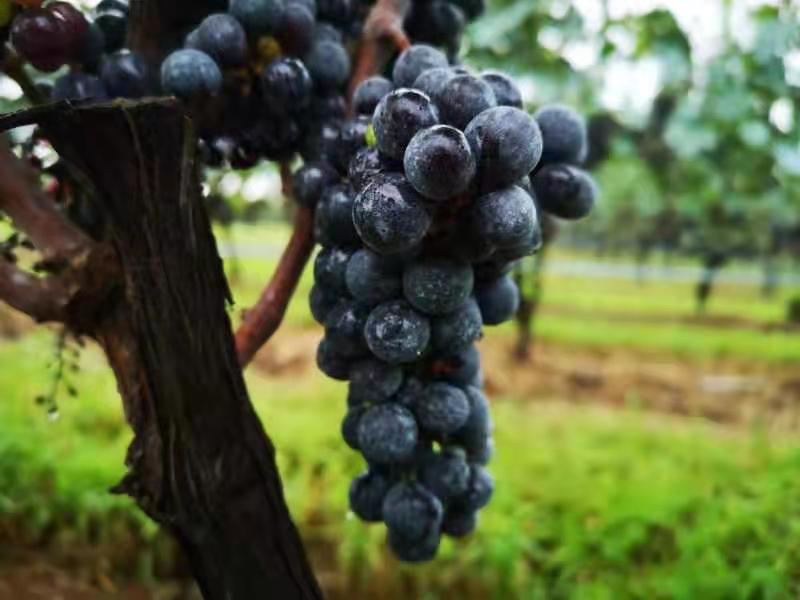
Cabernet Franc has a long and distinguished history in many vineyards of France; consequently, it is not surprising that the variety is known by many other local names. It is ‘Acheria’ in the Basque country (or ‘fox’ in the local language); ‘Bouchet’ in the Bordeaux area; and ‘Breton’ in the Val de Loire (as revealed to us by none other than one of the world’s most famous writers, Francois Rabelais). Beware that in spite of what you might think and would only seem logical enough, the ‘Breton’ monicker derives not from ‘Brittany’ but is the name of the French monk who is believed to have been the first to have brought Cabernet Franc to the Loire from the Bordeaux area.
Cabernet Franc is one of the world’s top twenty most planted wine grapes (seventeenth actually, at least at last count), but its popularity is on the upswing. Whereas at 39,619 hectares it was only the 32nd most planted wine grape in the world in 1990, it had already become the nineteenth most planted wine grapein 2000 (48,551 hectares); and the latest wine grape-head count (2010) tells us it has reached 53,599 hectares, placing it in the aforementioned seventeenth spot worldwide. And from that already lofty perch, it is closing in rapidly on Monastrell, Graševina and Rkatsiteli, the three sitting ducks, er grapes, currently in the fourteenth, fifteenth and sixteenth spots respectively, but whose overall hectares have been plummeting for three decades straight. Cabernet Franc has become so popular it has its own holiday (International Cabernet Franc Day is celebrated on December 4) and entire blogs dedicated only to it and its wines (for example, check out Instagram’s @cabfranchcronicles).
In France, Cabernet Franc thrives mostly in Bordeaux’s right bank area and the Loire, with small but significant plantings in the Southwest, namely in the Bergerac, Madiran and Irouleguy denominations. Still today, over half the world’s Cabernet Franc is planted in France, with Italy a distant second, but again, in both countries Cabernet Franc plantings are increasing steadily. Whereas in 1960 there were only about 10,000 Cabernet Franc hectares in France, there were over 35,000 hectares there by 2010 (and the latest available data speaks of more still, 38,700 hectares). In Italy, there are close to 7000 hectares of Cabernet Franc growing, though the accuracy of that number needs to be reviewed in light of the incorrect identifications that long plagued Cabernet Franc relative to Carmenère, another Carmenet family member (that even experienced wine folks have trouble telling apart from Merlot and Cabernet Franc). But even taking into account some minor discrepancies in the Italian grape count, it remains that between France and Italy, the two grow close to 75% of the world’s Cabernet Franc.
Cabernet Franc is a very adaptable and even rustic variety, better suited to both colder and hotter, as well as more humid, climates than are either Cabernet Sauvignon or Merlot. Soils rich in clay, limestone, gravel and sand are best for Cabernet Franc; it buds and ripens later than Merlot but earlier than Cabernet Sauvignon (by at least a week, if not more), making it better suited for growing in cooler climates, such as that of the Loire or the mountainous areas of Irouleguy (and of Bordeaux in cooler vintages). In fact, it has much greater cold resistance, period, than does Merlot (see my upcoming Cabernet Franc part 2 article here on TerroirSense to see how well it is faring in cool climate areas such as Canada). It does need to be cropped low however, because overly-generous yields are almost unfailingly associated with generally sharp green, vegetal streaks raging from strong herbaceous underbrush to pungent green bell pepper notes, courtesy of the variety’s methoxypyrazine content that is potentially higher than in almost any other Carmenet family member with the exception of Carmenère.
Cabernet Franc: Wines
In most countries, Cabernet Franc has always been used more often than not as a blending grape, but over the last twenty years it has become apparent to many that Cabernet Franc should be allowed to fly solo much more often than it has. This is because monovariety Cabernet Franc wines can be truly magnificent. After all, it stands to mean something that the best wines of Château Cheval Blanc (and to some extent, those of Château Haut-Brion too) have almost always been those with a much higher than usual proportion of Cabernet Franc in the blend. But if great Cabernet Franc wines will certainly be amongst the handful of best wines you will ever taste, even the simply good ones are a joy to drink. Light to medium-bodied, those wines made with grapes where optimal physiologic ripeness has been attained are beautifully and piercingly perfumed. Importantly, the olfactory profile redolent of noble cocoa (not the milk chocolate of most Merlot wines), woodsy nuances, graphite, olive, sweet spices, black pepper, and red and dark berries that typifies the wines of Cabernet Franc is characterized by a lightly aromatic quality that is completely absent in both Cabernet Sauvignon and Merlot wines). Cabernet Franc wines also have a higher acid, lower tannin mouthfeel with generally medium alcohol levels only (lower alcohol by volume compared to both Merlot and Cabernet Sauvignon wines). Thanks to the higher acidity and gentler tannic framework, Cabernet Franc wines are so easy to drink and enjoy, and can take a light chilling well. Consequently, they can be ideally consumed with simpler bistro fare, not just big lamb, beef or game dishes. But mostly, it is the magical perfume and silky texture of the greatest Cabernet Franc wines (for example, Château Lafleur, Château Cheval Blanc, Clos Rougeard, and Le Macchiole Paleo spring immediately to mind) that immediately make one comprehend the unabashed greatness this variety is capable of.
Clearly, the aroma and flavor profiles of Cabernet Franc wines can differ quite a bit based on where the variety is grown (see below) and on the vintage. Wines will generally show more tart fruit flavors and more mineral, fresher profiles when made with grapes grown in cooler climates such as the Loire Valley, while in warmer areas such as the Bolgheri region in Tuscany, Cabernet Franc wines taste more of sweet strawberry and dried red fruit flavors with a top-note of sweet spices (rather than herbs) that can be truly drop-dead gorgeous. But for the most part any good, well-made Cabernet Franc will taste like a much more perfumed, refined and less thick version of Cabernet Sauvignon.
If there is a caveat to Cabernet Franc and its wines, is that both require patience. Whereas Merlot wines are easy to appreciate and understand almost from the get-go (which is precisely why percentages of Merlot are usually greatly increased during tastings of young wines such that less experienced and/or gullible wine writers in attendance will take to them like ducks to water), and while Cabernet Sauvignon wines can’t help but impress all those size-yearning individuals who never met a bazooka, howitzer or sledgehammer they didn’t like, Cabernet Franc grape and wines are svelte long distance runners. Think gazelle, not Merlot’s hippo or Cabernet Sauvignon’s elephant. The best Cabernet Franc wines are always made mostly from quite old vines: thirty years at a minimum, and fifty-plus is even better according to Jean-Claude Berrouet (for more than forty years the man who made wines of near-mythical status such as Petrus, Trotanoy and later Dominus in California). This is because prior to reaching that age bracket, the wines will fail to express all the depth and complexity they have in store. In fact, it’s not just Cabernet Franc vines that need age to show all they’ve got to offer: most of the grandest Cabernet Franc wines reveal all their glory only with considerable bottle age too. You realize that in a world where even instant gratification is sometimes much too slow to please, Cabernet Franc is at a considerable disadvantage. Hence wines top-heavy in the variety almost always get less enthusiastic reviews and press than those made with their more showy (vulgar?) and better-known relatives, not to mention lower scores. But happily times-are-a changin’, and a variety that was often reduced to being mostly a blending agent used to cover up the well-known deficiencies of Merlot’s wines (lack of structure and acidity; and of perfume too, in hot vintages) and those of Cabernet Sauvignon (lack of balance, nuance and grace) can at long last fly solo and show all it’s got. Which is plenty.
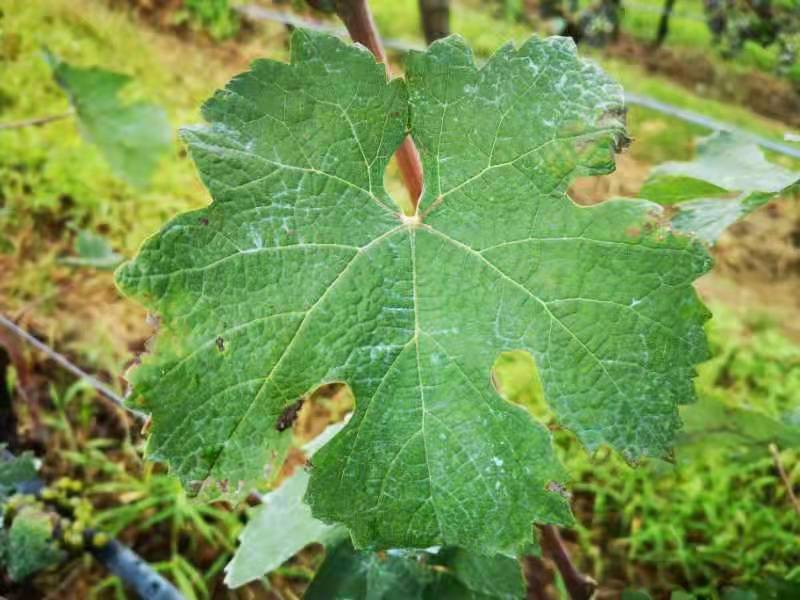
The Cabernet Franc of France
Bordeaux
In Bordeaux, Cabernet Franc is planted mostly on the right bank of the Dordogne River (the one that joins the Garonne river to form the Gironde estuary). Therefore, Cabernet Franc-dominated wines are mostly those of Appellations such as Pomerol, Saint-Émilion and Fronsac. By contrast, the variety is essentially a no-show on Bordeaux’s left bank, as that part of Bordeaux has always been plagued by a poor selection of Cabernet Franc, pushing most estates to do away with it. The few properties there that have high quality Cabernet Franc are Château Haut-Brion (in Pessac of Pessac-Léognan), Château du Tertre (in the Arsac section of Margaux) and Château Les Carmes Haut-Brion (with vineyards located in three different towns of the Bordeaux metropolitan area in the Pessac-Léognan Appellation). But it’s the right bank where Cabernet Franc rules: the majority of wines there are made with 80-90% Merlot and 10-20% Cabernet Franc, but the Cabernet Franc presence is in fact highly variable, ranging from zero to 100%, depending on the wine and estate.
In fact, only a few Bordeaux wines are made with 100% Cabernet Franc (all from the right bank): the best known is a special bottling of Château TrotteVieille, not available for sale, called “Les Vieilles Vignes du TrotteVieille”, first made in the 2004 vintage from vines that are up to 150 years old. Other Bordeaux 100% Cabernet Franc wines are those of Château de Pitray, Château Civrac, Château Marjosse (Cuvée Ortolan), Château Haut-Meyreau Invindia (l’instant H), Clos Puy Arnaud (Les Acacias Cabernet Franc), Château La Dauphine (de La Dauphine Cuvée Prestige), Château Bernateau (‘Terrasses du Paradis’), Château Tour Peyronneau, Château Edmus Ouef de Beaune, Château Belle Assise. Otherwise, the Bordeaux wine that features the highest proportion of Cabernet Franc is Sant-Emilion’s Le Dôme, ranging from 75-85% Cabernet Franc. Other estates Saint-Emilion properties with noteworthy Cabernet Franc content in their wines include Château Petit Gravet (80%) and Château Jean Faure (up to 54%); Château Ausone is often at 50% Cabernet Franc, and Château Angelus comes close too. Furthermore, in some vintages, wines that normally already contain quite a bit of Cabernet Franc are made with a lot more of this grape than usual: witness for example the 1990 Le Petit Cheval (the second wine of Cheval Blanc) that clocked in at an amazing 98% Cabernet Franc, and the 1998 Petit Cheval (86% Cabernet Franc). You can believe me when I tell you that the latter wine is much better than the much more famous and expensive Cheval Blanc of the same year (a disappointing Cheval Blanc that is much too top heavy with Merlot)! In Pomerol, the highest percentages of Cabernet Franc are those of Château Lafleur, that usually averages about 53-55% Cabernet Franc (though the outstanding, unforgettable 2010 famously came in at 62%).
For the most part, the Cabernet Franc wines of Bordeaux usually reminds tasters of violet, sweet spices, blackcurrant and blackberry, with steely nuances. Nevertheless, Bordeaux’s best Cabernet Franc wines are luscious and silky, with a bigger mouthfeel than those of other parts of France.
Loire
The best-known appellations for Cabernet Franc in the Loire Valley are Chinon, Bourgueil, and St.Nicolas de Bourgueil (all in Touraine) and Saumur-Champigny (in Anjou). In general, wines from Chinon fall somewhere in between those of Saint-Nicolas-de-Bourgueil and those of Saumur-Champigny, that sit at the two extremes of the Loire Cabernet Franc spectrum. A good Chinon will smell and taste of red cherry, raspberry coulis, jalapeño, fresh raspberry, plum, leafy underbrush, roasted red and green bell peppers, graphite and wet gravel, but much depends on how cool the vintage is and how high the individual estate yields are. In bad years, the wine can be thin and unbearably green and herbaceous. In general, Chinons will have moderate acidity and tannins, while wines from Saint-Nicolas-de-Bourgueil and Bourgueil are more tannic, boasting more of a raspberry, red currant, graphite and sweet spice aroma and flavour profile. At the opposite end of the spectrum, Saumur-Champigny wines are often the lightest in style, with piercing perfume and racy blackcurrant aromas and flavours.
Cabernet Franc is such a way of life in the Loire that it also somewhat atypically used to make rosé wines, such as the Rosé de Loire and Rosé d’Anjou. Obviously thinking that wasn’t weird enough in and of itself, Loire vignerons also make a sparkling wine wholly or in part with Cabernet Franc, called Crémant de Loire.
The Southwest
Cabernet Franc grows in Bergerac, Madiran and Irouleguy, were exceptionally good but little-known wines are made with it. In Irouleguy especially (one of France’s prettiest wine regions), the wines exude typically red fruit, and are more often than not marked by a stronger herbaceous note, but coupled to gentler frames than is typical in Bordeaux and the Loire, while exuding noteworthy elegance and harmony. The wines of Bergerac and Madiran are instead usually on the chunkier and at times slightly more rustic side, but are perfect with the region’s hearty fare.
The Cabernet Franc of Italy
Differently from Cabernet Sauvignon and Chardonnay, that are only very recent arrivals in the country and that are truly international varieties in Italy (despite what some less than serious, far-reaching trapeze artist producers would like you to believe, in an effort to cash in on the fact that wines made with native grapes sell well), Cabernet Franc is (along with Merlot and the Pinot grapes) at the very least a traditional grape variety of Italy’s north-east. Traditional because it was brought to Veneto and Friuli Venezia Giulia well over three hundred years ago by European nobles who married Italian counterparts; and in fact, it is very common for locals of those two regions to ask for a glass of “Cabernèt” (with the accent on the final ‘e’). But when they do so, it is Cabernet Franc they refer to, not Cabernet Sauvignon. Unfortunately, due to mistakes made in ampelographic recognition when the replanting of old vineyards began in earnest, much of Italy’s vineyards of old vine “Cabernet Franc” turned out to be planted to Carmenère instead. This is why Cabernet Franc in Italy had a less than stellar reputation of wines almost always marked by strong green streaks. Today, new vineyards of Cabernet Franc really are planted to the actual variety; and so, today Italy’s largest extensions of Cabernet Franc are found along the Tuscan Coast. The latter is a specific warm, sunlit, marine habitat the grape has taken to extremely well. So much so that the Tuscan Coast is where the world’s best monovariety Cabernet Franc wines are found today. These wines tend to be more showy and exuberant than those of France, with an absolutely enchanting luscious, silky mouthfeel that I guarantee will leave a lasting impression. At once rich and refined, they offer complex wines aroma and flavour profiles redolent of ripe red fruits and their jams, sweet pipe tobacco, green olive, dark plum, chocolate/cocoa, sweet spices (mostly cinnamon) and chili pepper. The variety has met with so much success that an ever increasing number of monovariety Cabernet Franc wines are being made; and even those producers that only used it in a blend are now upping its percentage of it considerably.
The wines in the tasting
For this TerroirSense report, I focused, almost exclusively, on monovariety (100%) Cabernet Franc wines of France and Italy. Clearly, as in Bordeaux Cabernet Franc rarely gets to fly solo, the wines included in this report from that French region are blends with Merlot.
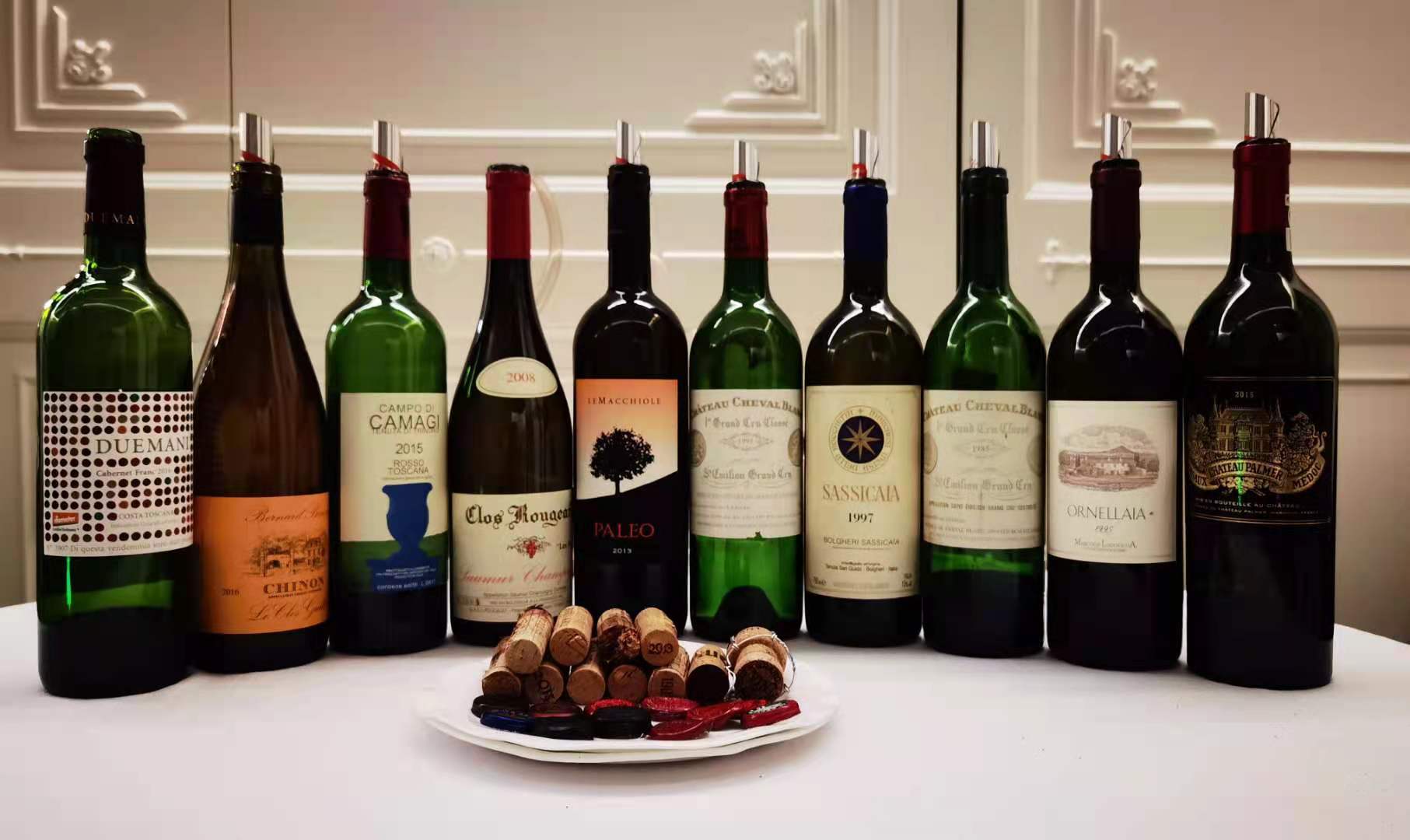
Château Cheval Blanc 2010 Saint-Emilion 100
Deep, bright ruby. Highly expressive nose of blackcurrant and blueberry, with sexy floral and spice notes adding truly noteworthy complexity. Then also very lively and pure in the mouth, with brooding, almost steely red and dark fruit flavours boasting an exotic floral quality that become spicier on the back end. Impressively concentrated yet vibrant, this closes with memorable clarity, cut and length. Drinking window: now-2060.
Château Lafleur 2010 Pomerol 100
Deep ruby. Enticing aromas of violet, blackcurrant and blueberry turnovers, minerals, and cocoa. Silky and refined but powerful and dense, a real fist of steel in a velvet glove, with harmonious lively acidity nicely extending the deep compelx flavours on the very floral back end. Knockout wine. Drinking window: now-2050.
Tenuta San Guido 2017 Bolgheri Sassicaia Sassicaia 97
Full ruby-red. Ripe but lifted aromas of raspberry, mocha, coffee and sweet spices, plus hints of tobacco and vanilla. Wonderfully ripe and full but with noteworthy violet lift to the deep, creamy and very pure flavours of blackcurrant, minerals, mocha, and mint. Closes long and suave. A superlative, classy 2017 that will age but is so hard to resist right now. Drinking window: 2026-2040.
Philippe Alliet 2000 Chinon Coteau de Noiré 97
Luminous deep red. Drop-dead gorgeous nose of aromatic herbs, strawberry, raspberry liqueur, minerals and violet. Pure, suave and dense, with a multilayered personality that runs deep and long. Outstanding red, a truly great, great Chinon that is aging beautifully and has still lots of life left. Drinking window: now-2035.
Le Macchiole 2004 Paleo Rosso Bolgheri 96
Good full ruby-red. Vanilla and smoke complement creamy red fruit and herb aromas and flavours. Ultra-smooth and tactile, with softly ripe tannins and harmonious acidity that nicely carry the suave flavours on the long, liqueur-like back end. The 2004 Paleo is one of the two greatest Paleos ever made, a wine that has always stood out for its amazing density creaminess and size and yet elegance and refinement too. It is an absolute essence of Cabernet Franc goodness. Drinking window: now-2030.
Château Cheval Blanc 1985 Saint-Emilion 95
Good full red. Captivating aromas and flavours of strawberry, raspberry jelly, red cherry marmalade, violet, chlorophyll, ink, graphite, and minerals. At once suave and concentrated, with wonderful acid-fruit-tannin balance and a finish that lasts and lasts, featuring a repeating sweet spices and red cherry personality. This is by far the best bottle I have ever had of the 85 Cheval Blanc, hinting at none of the very delicate gamey nuances that other bottles have shown in the past (a consequence of the dry year). This is simply beautiful and will age effortlessly another thirty years. So good you realize why Cheval Blanc is one of the most sought after wines on the planet. Drinking window: now-2035.
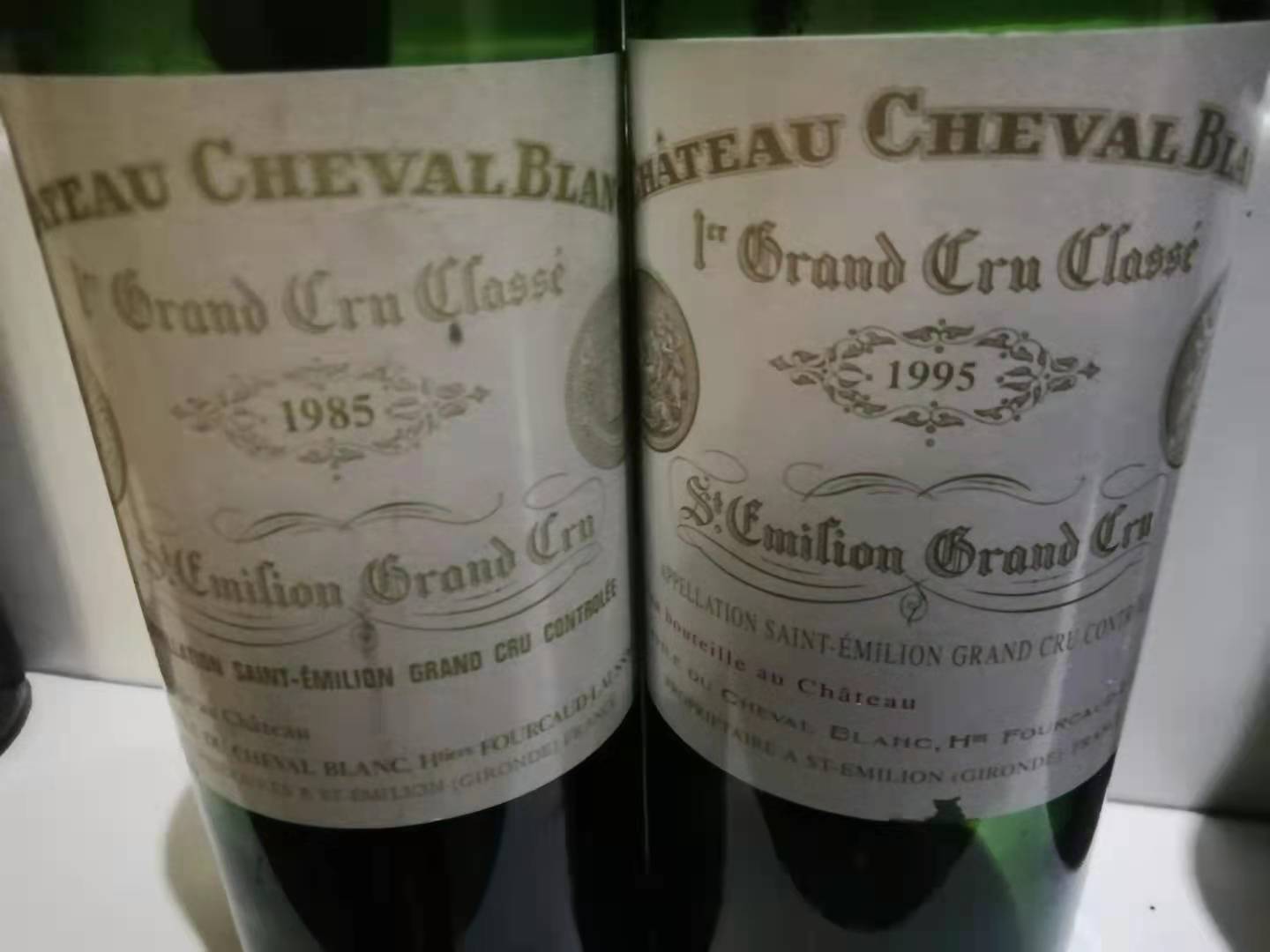
Jonathan Maltus 2015 Le Dome Saint-Emilion Bordeaux 95
Deep ruby. Luscious but vibrant aromas and flavours of blueberry, blackcurrant, violet, and cocoa. At once rich thick and light on its feet, this has a long suave finish featuring outstanding acid-tannin-fruit balance. A real knockout wine from a master of the Cabernet Franc variety. Drinking window: now-2032.
Tenuta di Trinoro 2015 Toscana Rosso Campo di Camagi 95
Good full luminous red. Sweet spices and sexy oak dominate the mind-bendingly perfumed ripe strawberry and red cherry jam on both the nose and in the mouth. The nose is so intense it is a little like sniffing glue. Thick, sweet and creamy, with a suave tannic spine providing support to the red fruit and spice flavours, this is at once opulent and refined. There’s a hit of graphite and leafy underbrush that add complexity on the long suave finish. Still very young, this will age nicely in a good cellar. Outstanding Cab Franc that is just hinting at all the greatness it will offer one day. Drinking window: 2028-2050.
Le Macchiole 2013 Paleo Rosso Bolgheri 94+
Deep bright red. Ripe, sweet red fruit and balsamic herbs on the refined nose. Then creamy and sweet in the mouth, with deep nuanced flavors of strawberry, raspberry, red cherry liqueur, minerals, cinnamon, marzipan and herbs. The finish is multilayered and dense and extremely long. At eight years old this is a real crowd pleaser, with its ripe creamy fruit personality truly irresistible, but it still seems to be holding back all it has to offer, such that cellaring it some more will only help it develop more complexity. Cabernet Franc in Italy rarely if ever gets better than Paleo. Drinking window: 2026-2043.
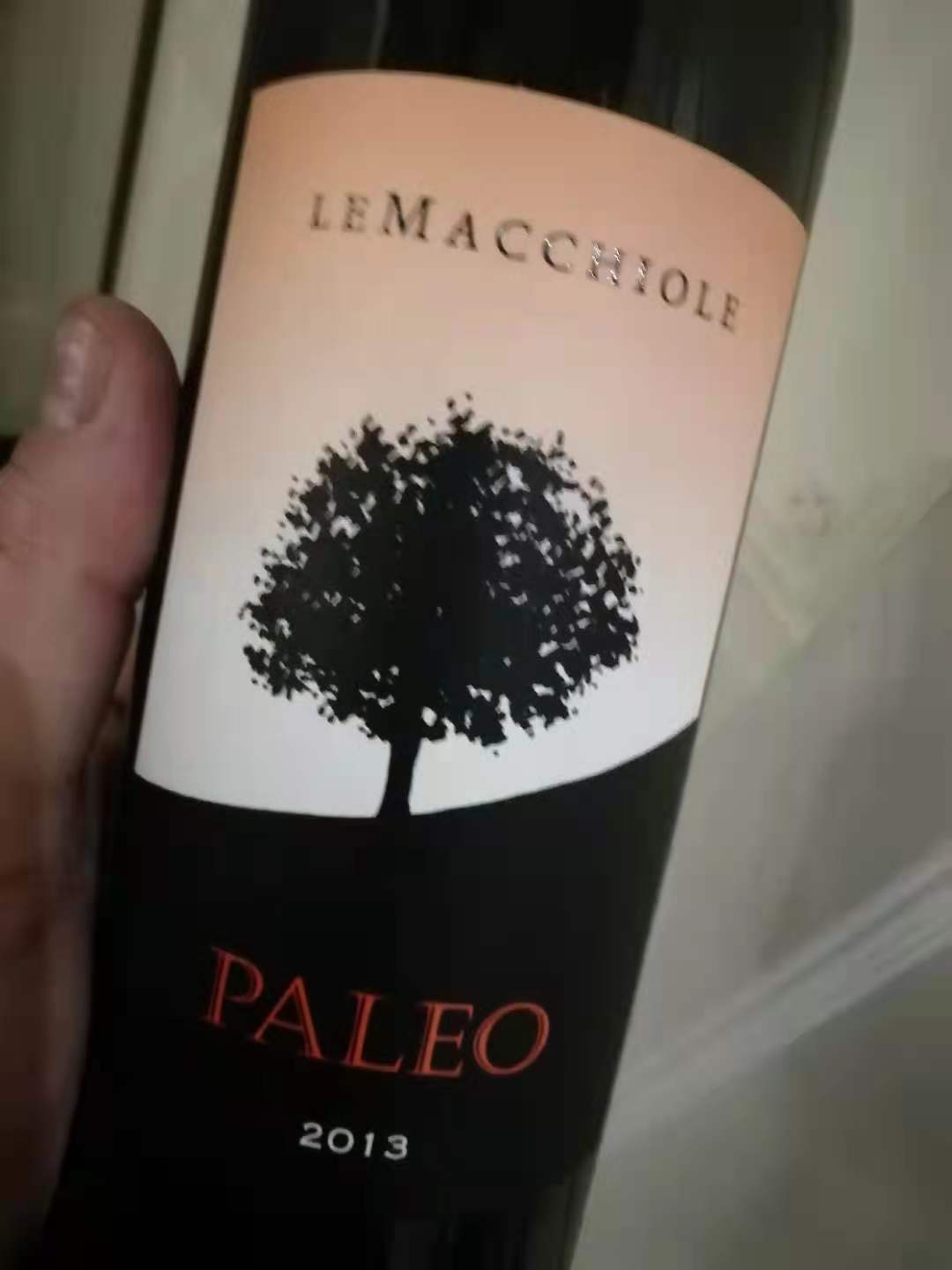
Clos Rougeard 2012 Les Poyeux Saumur Champigny 94
Vibrant ruby-red. Expressive, elegant nose of aromatic herbs, blueberry, raspberry coulis, and strawberry jam, with minerals and violets in the background. Then similarly refined in the mouth with flavours that echo the aromas and a long clean finish that reverberates with mineral and herbal nuances. Outstanding Loire Cab Franc. Drinking window: now-2032
Tenuta Ornellaia 1995 Ornellaia Bolgheri Superiore 94
Deep ruby-purple. Inviting and very pure aromas and flavours of dark plum, blackberry, minerals and tobacco, complemented by hints of ink and violet. Sweet, lush, and forward, spreading broadly out to coat the palate and boasting good mineral precision and lift. Finishes juicy and long, with ripe suave tannins and an easily accessible not overly complex personality. A lovely blend of Bordeaux varieties but this is really mostly a Cabernet Sauvignon wine; hence, the Cabernet Franc presence is pushed a little into the background. Drinking window: now-2030.
Château Cheval Blanc 1995 Saint-Emilion 93 Moderately saturated ruby. Minerals, violets and strawberry on the perfumed, expressive nose. Lively in the mouth, with a 1995-typical tannic framework neatly supporting the red and floral flavours, and the harmoniopus acidity nicely extending the flavours on the lively back end. A very successful 1995 Bordeaux, that like many right bank wines that vintage, clearly outperformed their left bank relatives. Drinking window: now-2035.
Duemani 2004 Costa Toscana Duemani 93
Deep ruby. Perfumed aromas and flavours of ripe and thick strawberry, sweet spices, graphite and violet. Smooth and creamy but also vibrant and lifted, this offers lingering nuances of underbrush and red fruits on the gently tannic long finish. One of the ebst Duemani versions ever. Drinking window: now-2030.
Herri Mina 2018 Irouleguy Rouge 93
Herri Mina is an estate located in France’s Basque contry in the Southwest corner on the border with Spain. In Basque language, ‘herri’ means country, and ‘mina’ means homesick, a tongue in cheek reference owner Jean-Claude Berrouet, for 43 years the winemaker at Petrus and all the JP Moueix estates, wanted to draw attention to the fact he is originally from the area and misses it when to long away. The Herri Mina 2018 Irouleguy Rouge is 100% Cabernet Franc and it is an absolute beauty. Bright ruby colour, delicate herb and black olive notes complement blueberry, blackcurrant, tobacco and mint aromas and flavours. Gently tannic, with a zingy but harmonious acidity, this medium bodied gem boasts impeccable balance and refinement. The 2018 was fermented in stainless steel tanks and aged for 16 months in 10% new French barriques. Drinking window: now-2032.
Tenuta Argentiera 2015 Bolgheri Ventaglio 93
Fully saturated red-ruby. Very dark aromas and flavours of black fruits, violet, licorice dried herbs and sweet spices are complicated by notes of bitter chocolate and mint. Large-scaled, thick and sweet, but with excellent lift and focus, it boasts mouthcoating but noble tannins and lingering black fruit and earth notes on the vivid aftertaste. This 85% Cabernet Franc and 15% Cabernet Sauvignon wine is the first vintage made. Drinking window: now-2030.
Tenuta di Biserno 2014 Il Pino di Biserno Toscana Rosso 93
Vivid ruby-purple. Blackberry, blackcurrant, green olive, camphor, black tea and minerals on the nose boast a welcome floral topnote. Rich round and ripe, with an herbal and cedar nuance to the dark fruit flavours nicely framed by suave tannins and lively acidity. This is at once luscious and lively. Drinking window: now-2028.
Tenuta San Guido 2007 Bolgheri Sassicaia Sassicaia 93
Deep ruby. Mineral and herbal nuances complement blueberry and blackcurrant aromas and flavours. An harmonious acid spine nicely extends the flavours on the creamy, ripe but refined finish. An 85% Cabernet Sauvignon and 15% Cabernet Franc blend. Drinking window: now-2030.
Ca Marcanda/Gaja 2015 Bolgheri Magari 92
Good medium ruby. Ripe, slightly high-toned aromas and flavours of raspberry, milk chocolate and candied violets. Not especially expansive or large-scaled but well delineated, sweet and suave, offering a mouthfeel that is at once ripe and energetic but with real tannic grip. A blend of 60% Cabernet Franc, 30% Cabernet Sauvignon and 10% Petit Verdot. Drinking window: now-2032.
Duemani 2016 Costa Toscana Duemani 92+
Bright medium ruby. Perfumed aromas of cassis, strawberry, bitter chocolate, menthol, and violet. Not quite as dense (yet?) as the 2004 but boasts excellent thrust and focus to its pure flavours of black and blue fruits, licorice and graphite. The big, sweet tannins hit late, and build on the long back end. In typical slowly evolving Cabernet Franc style, this is currently not very complex so I suggest you forget about it in the cellar for another six to eight years. Drinking window: now-2035.
Fornacelle 2011 Cabernet Franc Foglio 38 Bolgheri Superiore 92
Deep red-ruby. Spicy nose offers red- and black-currant, tobacco leaf, mint, rosemary, cloves and herbs lifted by peppery and tobacco elements. At once thick and light on its feet, with juicy acidity and repeating floral and aromatic peppery nuances that bring energy to the perfumed mid-palate. Very nicely delineated wine that features delightfully chewy but noble tannins and plenty of riope red fruit on the thick finish. Made with Cabernet Franc planted in 1998, the wine’s name is the cadastral reference in the land register. Drinking window: now-2028.
Bernard Baudry 2016 Chinon Le Clos Guillot 91
Deep ruby-red. A funky whiff of game blows off only slowly with aeration, slightly compressing the dark fruit and herbal flavours underneath. In the mouth, smooth tannins nicely frame the deep red fruit and herbal flavours. Closes long and suave. Drinking window: now-2033.
Bernard Baudry 2012 Chinon La Croix Boissée 91
Deep moderately opaque ruby. At once concentrated and powerful on both the nsoe and in the mouth, with layers of black cherry and cassis nicely complemented by hints of leather, violets and herbs. Finsiehs with gentle tannins and plenty of depth, not to mention length. A very ripe, in your face Cab Franc wine that reminded me of some South and North American examples. Maybe slightly atypical, but really very nice. Drinking window: now-2027.
Casadei 2014 Cabernet Franc Filare 18 Toscana 91
Deep ruby. More black than red fruit on both the nose and in the mouth, with plenty of earthy tones and herbs for added complexity. Finishes juicy and with zingy acidity, offering nuances of cedar and licorice. Not for the faint of heart, and you have to appreciate a little leafiness, but if you like strapping flavorful wines, then this is the Cab Franc for you. Drinking window: now-2028.
Domaine Olga Raffault 2012 Chinon Les Picasses 91
Good deep ruby. Dark cherry, plums and orange zest aromas and flavours are hard not to like. Gently tannic and layered, with vibrant acidity neatly extending the flavours on the long back end, this strikes me as a wine that will age especially well. Drinking window: now-2028.
Dominique Joseph 2015 Saumur Champigny Le Petit Saint Vincent Les Clos Lyzieres 90
Deep ruby-purple. Perfumed aromas of dark fruit violets and sweet spices. Rich and rather full-bodied, offering black cherry, dark plum, and candied violet flavours, complicated by hints of leather and lavender. Nicely accessible and easygoing in style, this will have plenty of admirers. Drinking window: now-2027.
Bernard Baudry 2000 Chinon La Crois Boissé 89
Bright red-ruby with a garnet edge. Aromas of red cherry, strawberry and bitter chocolate. Large-scaled and brooding, displaying nicely packed flavours of black fruits, bitter chocolate and tea accented by mushrooms, earth tones and dried herbs. Boasts plenty of texture and broad, mouth-dusting tannins but also abuilding gamey, leathery note that is really not to my taste. Drinking window: now.
Château de Villeneuve 2016 Saumur Champigny Le Grand Clos 88
Medium red. Musky red fruits, mocha, and flowers on the claret-like nose. Broad and fresh in the mouth, conveying a lighter, juicier impression but plenty of energy on the long lively back end that features a citrussy zing. Drinking window: now-2024.
Domaine du Roncée 2000 Chinon Clos du Marroniers 88
Deep ruby with a hint of garnet at the rim. Chestnuts, moss and woody spices and a slightly gamey funk dominate the red and blue fruit flavours on the nose and in the mouth. Thick and concentrated, long too, but the gamey funk note is a little too much for me. Drinking window: now.
Domaine Frederic Mabileau 2016 St. Nicolas de Bourgueil Les Rouilleres 88
Bright red. Herbs and strawberry on the enticing nose are complemented by hints of green peppercorns. Then savory and juicy, with flavours quite similar to the aromas, and along juicy and bright finish. Offers a ton of value for the price. Drinking window: now-2025.
Clos Rougeard 2008 Saumur Champigny 87
Lively red-ruby. Redcurrant and red cherry aromas have a strong herbaceous component. Then also herbal in the mouth, with mineral nuances adding complexity to the red fruit and graphite flavours. Finishes with tangy acidity and assertive tannins. Tastes a little like the fruit was perhaps not at full physiologic ripeness at time of harvest. Drinking window: now.

 中文
中文
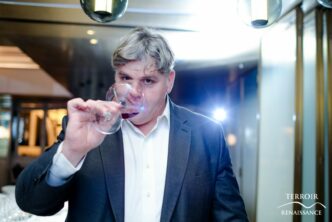



Super article Ian. Learned a lot about Cabernet Franc, and have to say that I was always a bit unsure about what to think of this varietal. Have been having a bit more monovariety Cabernet Franc here in Canada and have been pleasantly surprised at how good most have been. And your views on the CabFranc of FVG make excellent sense.
Ciao Steve, I think the most important thing to know about FVG and Cabernet Franc, but in fact of all the Bordeaux varieties there, is that, besides the Carmenere misidentification, it simply rains too much in the region (and it’s a cold region as well) for the Cabernets to fully ripen there more often than not. This is why the Merlot wines of FVG are often spectacular (think Miani) but the cabernets (both sauvignon and Franc) have not enjoyed the same degree of success. But this does not mean that Cab Sauv and Cab Franc cannot give excellent wines in warmer years, and in fact I have enjoyed many wonderful Cabernet wines from the region. Plus, with climate change, well… FVG may well become soon better known for its red wines more so than its whites!!!.. Something that would have been both unfathomable and unthinkable only 20 years ago!
Caro Ian, il tuo articolo sui “Savignon” è di grandissima levatura. Spero di poterti incontrare , magari a MOntalcino.
Complimenti anche per la tua rivista enologica
Un caro saluto
Ettore ( Sesta di Sopra ) Montalcino
Ciao Ettore, I too cannot wait to come visit you at the winery. For those who do not know, Ettore Spina is owner of one of Montalcino’s smallest but absolutely best estates, Sestadisopra, and I mean BEST, top 10-12.
See you soon hopefully once Covid allows safe travels and in the meantime thank-you for the very kiond owrds about TerroirSense.